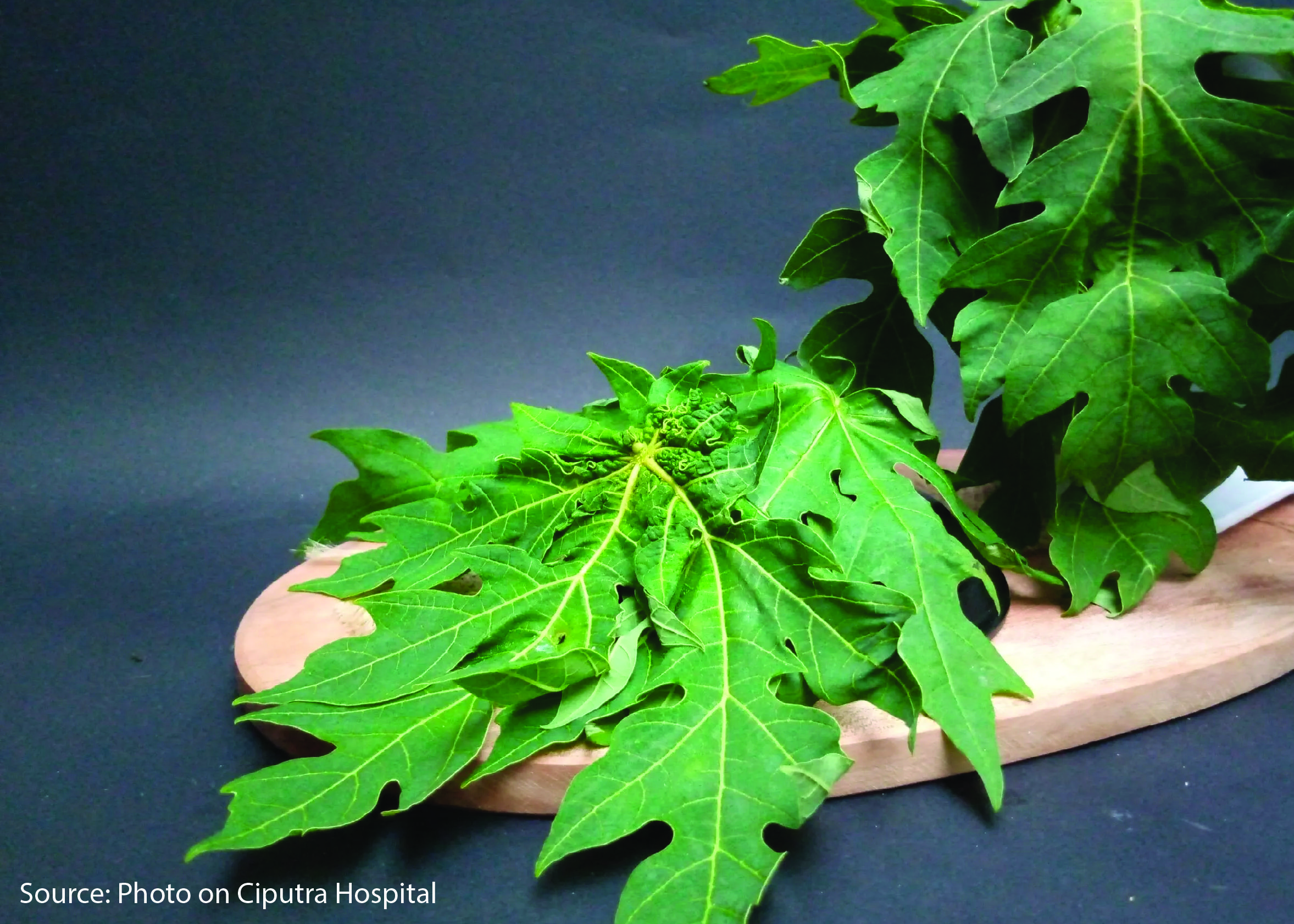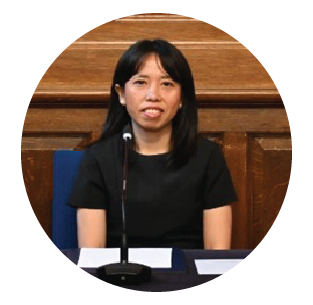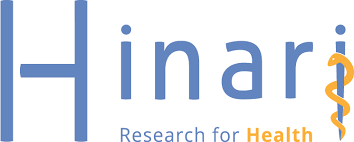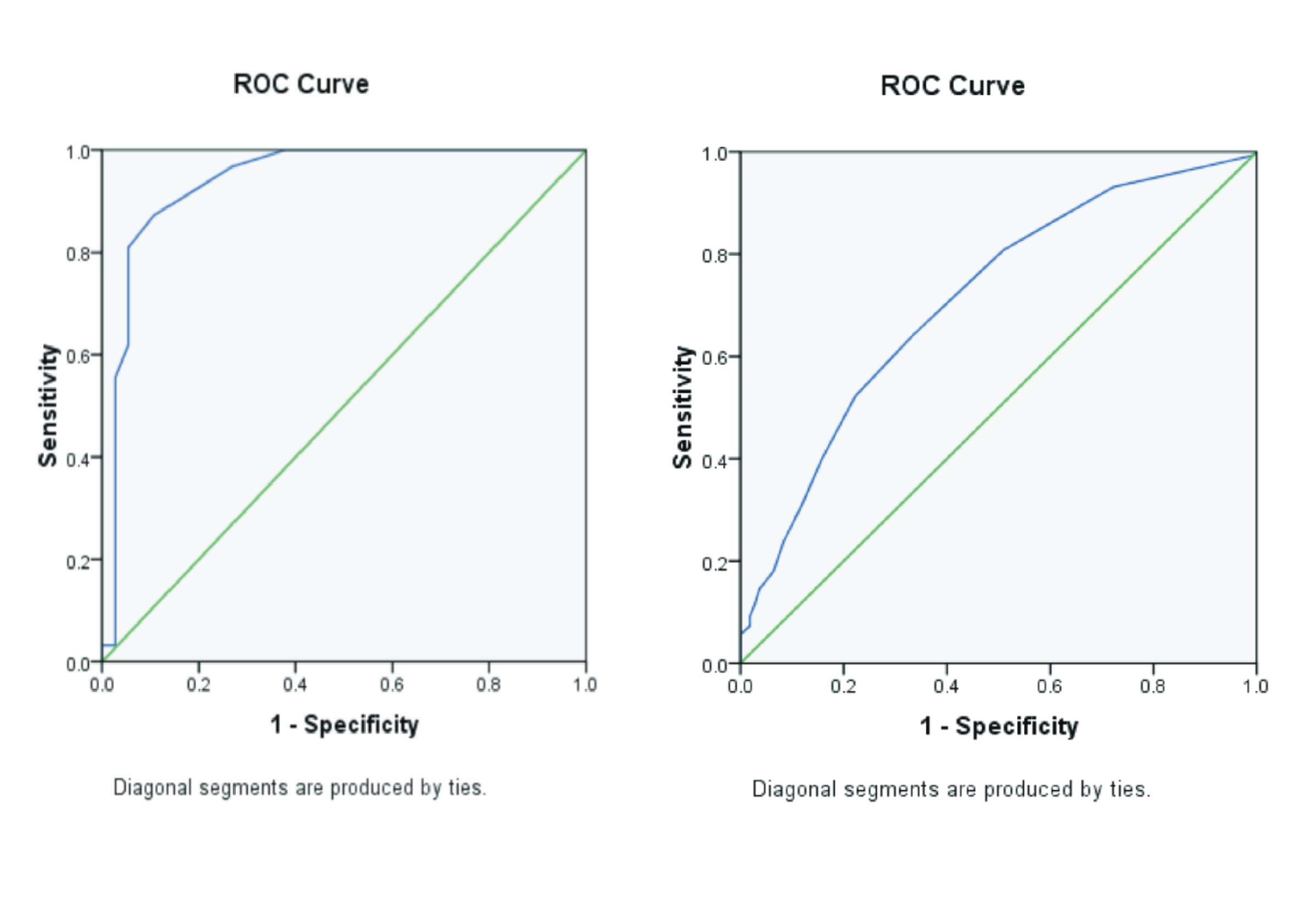THE EFFECTIVENESS OF PAPAYA LEAF EXTRACT (CARICA PAPAYA L.) AS AN ANTIAGGREGATION AGENT ON PLATELET COUNT AND PLATELET AGGREGATION: IN VITRO STUDY

Background: In hypertensive patients, platelet hyperaggregation may lead to acute ischemic stroke, which can increase mortality or neurological deficits. Papaya (Carica papaya L.) has potential effect to mitigate complications arising from hyperaggregation, because its effectiveness as antiplatelet aggregants. Purpose: The aim of this study was to determine the effectiveness of papaya leaf extract as an antiaggregation on platelet count and platelet aggregation. Method: A quasi-experimental design was adopted observing platelet counts utilizing a hematology analyzer medonic M32 and assessing platelet aggregation values through the velaskar method. These assessments were conducted on citrated blood samples, including a control group, aspirin at 5 ppm, and a group with citrated blood augmented with papaya leaf extract at concentrations of 5 ppm, 10 ppm, and 15 ppm. Result: The platelet count in citrated blood was 186.000 cells/μL and platelet aggregation was 75%. When with aspirin at 5 ppm, the platelet count was 153.000 cells/μL and platelet aggregation was 71%. In ethanol extract from papaya leaves at 5 ppm, a platelet count of 160.750 cells/μL and platelet aggregation of 70% were exhibited. At 10 ppm, the platelet count was 149.125 cells/μL and platelet aggregation was 65%. At 15 ppm, the platelet count was 105.675 cells/μL and platelet aggregation was 56%. The results of the General Linear Model (GLM) test indicated that p (Sig.) < 0.05. Conclusion: The ethanol extract of papaya leaves can be used effectively as an antiplatelet agent, reducing both platelet count and platelet aggregation at minimum concentrations of 5 ppm and 10 ppm of papaya leaf extract.
Introduction
Platelets are tiny fragments derived from the cytoplasm of megakaryocytes(Apriliani, 2016). Their primary role is to create a physical obstruction as part of the typical hemostatic response to vascular injuries(Sherwood et al., 2018),(Guyton and Hall Textbook of Medical Physiology E-Book: Guyton and Hall Textbook of Medical Physiology E-Book, 2020). Platelet count serves as a crucial diagnostic tool to enhance diagnostic accuracy, track therapeutic outcomes, gauge the progression of an illness, predict prognosis, and assess the severity of a condition(Sujud et al., 2015). Platelet count measurements can be expressed in units such as cells/mm³, cells/μL, x10³cells/mL, or x 10⁶ cells/L. Among these units, cells/mm³or cells/μL are the more commonly employed ones in platelet count assessments(Kuman, 2019). Higher platelet count was observed to have a significant causal effect on the elevated risk of hypertension through this bi-directional MR study(Chiu et al., 2021). Hypertension is commonly referred to as "The Silent Killer" because patients typically do not exhibit noticeable symptoms. This lack of symptoms can often lead to complications, including stroke, heart and blood vessel diseases, kidney disorders, and other health issues, if left untreated and unmanaged. Ultimately, these complications can lead to disability or even death(Rilantono, 2012). Hypertensive individuals commonly experience platelet hyperaggregation. The process of platelet hyperaggregation plays a significant role in the development of cardiovascular and cerebrovascular diseases, as it leads to platelet accumulation and the formation of thrombi. Platelet aggregation is observed to play a role in influencing the development of occlusions within cerebral blood vessels. Occlusions resulting from platelet hyperaggregation may serve as an outcome marker in acute infarction stroke. Platelet hyperaggregation is associated with unfavorable outcomes in acute infarction stroke, such as death or neurological deficits(Khan et al., n.d.),(W.H.O., 2013).
One of the plant species with potential in preventing complications associated with hyperaggregation is the papaya leaf (Carica papaya L.), commonly found in numerous tropical and subtropical countries, including Indonesia(Lopes et al., 2019). Papaya (Carica papaya L.) is extensively utilized by the community for medicinal purposes, encompassing the use of its leaves, fruits, seeds, and sap. These components are known to be employed in the treatment of various ailments such as typhoid fever, wound infections, asthma, diarrhea, hypertension, and more(Maniyar & Bhixavatimath, 2012). Flavonoids, steroids, and tannin compounds in free form and tannin-protein complexes are efficacious as antiaggregants(Yogiraj et al., 2014),(A’yun & Laily, 2015)(Pamungkas et al., 2020). Furthermore, papaya is also valuable for its antimicrobial and anti-inflammatory properties(Gupta et al., 2017)and analgesic(Danborno et al., 2018)and antioxidant(Mandal et al., 2015). Given the numerous advantages associated with papaya leaf (Carica papaya L.), a research was undertaken to assess the efficacy of papaya leaf extract (Carica papaya L.) in reducing platelet aggregation and impacting platelet count(Sathyapalan et al., 2020). The high ratio of potassium to sodium is very beneficial for preventing the occurrence of hypertension as too much sodium in the body is a signal to increase blood pressure. So, with the presence of high potassium inCarica papaya L. can compensate for the amount of sodium(Wahdi et al., 2020). Several studies have demonstrated a noteworthy correlation between the administration of papaya leaf extract and an increase in platelet levels(Dharmarathna et al., 2013),(Kumar et al., 2018).
The innovative aspect of this research lies in examining the effects of ethanol extract from papaya leaves (Carica apaya L.) on platelet count and platelet aggregation. Currently, the cost of platelet aggregation examination using automated methods or turbidimetry remains high. Therefore, this research conducts platelet aggregation testing using the velaskar method in vitro or manually, with a more economical examination cost, serving as a screening for platelet aggregation. Thus, the outcomes of this research can provide information on the effects of ethanol extract from papaya leaves (Carica Papaya L.) on platelet count and platelet aggregation using an alternative platelet aggregation examination method employing the velaskar method.
Material and method
This research employed a quasi-experimental design, involving the assessment of platelet count using the hematology analyzer medonic M32 and the measurement of platelet aggregation through the velaskar method. The research used citrated blood samples taken from those who were considered normal by random sampling with normal platelet count from the Department of Medical Laboratory Technology at the Polytechnic of the Ministry of Health in Bandung, including a control group, a group with citrated blood supplemented with aspirin at 5 ppm (aspirin control), and a group with citrated blood enhanced with papaya leaf extract (Carica papaya L.) at concentrations of 5 ppm, 10 ppm, and 15 ppm. This research has been approved by the ethics committee with number 10/KEPK/EC/X/2023 issued on 29thOctober 2023 by the Health Research Ethics Commission of the Bandung Ministry of Health Polytechnic.
The research involved four samples, two male and two female students, who were considered normal, from the Department of Medical Laboratory Technology at the Polytechnic of the Ministry of Health in Bandung. Each student provided a blood sample of ± 12 mL, which was then used to conduct platelet aggregation assessments utilizing the velaskar method and platelet count measurements using the hematology analyzer medonic M32. The research results were handled anonymously
Apriliani, T., 2016. Gambaran Hitung Jumlah Trombosit dengan Antikoagulan K3EDTA 10%.
A’yun, Q., Laily, A.N., 2015. Analisis Fitokimia Daun Pepaya (Carica Papaya L.) di Balai Penelitian Tanaman Aneka Kacang dan Umbi, Kendalpayak, Malang. In: Seminar Nasional Konservasi dan Pemanfaatan Sumber Daya Alam 2015. Presented at The Seminar Nasional Konservasi dan Pemanfaatan Sumber Daya Alam 2015, Sebelas Maret University, Pp. 134-137.
Chiu, P.-C., Chattopadhyay, A., Wu, M.-C., Hsiao, T.-H., Lin, C.-H., Lu, T.-P., 2021. Elucidation of a Causal Relationship Between Platelet Count and Hypertension: A Bi-Directional Mendelian Randomization Study. Frontiers in Cardiovascular Medicine Vol. 8, Pp. 743075.
Danborno, A.M., Ibrahim, S.H., Mallo, M.J., 2018. The Anti-Inflammatory and Analgesic Effects of The Aqueous Leaves Extract of Carica Papaya. IOSR Journal of Pharmacy and Biological Sciences (IOSR-JPBS) Vol. 13(3), Pp. 60-63.
Dharmarathna, S.L.C.A., Wickramasinghe, S., Waduge, R.N., Rajapakse, R.P.V.J., Kularatne, S.A.M., 2013.Does Carica Papaya Leaf-Extract Increase ThePlatelet Count? An Experimental Study in A Murine Model. Asian Pacific Journal of Tropical BiomedicineVol. 3(9), Pp. 720-724.
Gupta, A., Patil, S., Pendharkar, N., 2017. Antimicrobial and Anti-Inflammatory Activity of Aqueous Extract of Carica Papaya. Journal of HerbMed Pharmacology Vol. 6(4), Pp. 148-152.
Hall, J.E., Hall, M.E., 2020. Guyton and Hall Textbook of Medical Physiology E-Book: Guyton and Hall Textbook of Medical Physiology E-Book, 14th edn. Elsevier Health Sciences, Philadelphia.
Hermann, W., Risch, L., Grebhardt, C., Nydegger, U.E., Sakem, B., Imperiali, M., Renz, H., Risch, M., 2020. Reference Intervals for Platelet Counts in the Elderly: Results from the Prospective SENIORLAB Study. Journal of Clinical Medicine Vol. 9(9), Pp. 2856.
Ick, B.L., Mongan, A.E., Memah, M., 2014. Perbandingan Nilai Agregasi Trombosit pada Pasien Hipertensi yang Diberi Aspirin dan Tidak Diberi Aspirin di RSUP. Prof. DR. R. D. Kandou Manado. eBiomedik Vol. 2(2), Pp. 523-531.
Khan, N.A., Hemmelgarn, B., Herman, R.J., Bell, C.M., Mahon, J.L., Leiter, L.A., Rabkin, S.W., Hill, M.D., Padwal, R., Touyz, R.M., Larochelle, P., Feldman, R.D., Schiffrin, E.L., Campbell, N.R.C., Moe, G.,Prasad, R., Arnold, M.O., Campbell, T.S., Milot,A., Stone, J.A., Jones, C., Ogilvie, R.I., Hamet, P.,Fodor, G., Carruthers, G., Burns, K.D., Ruzicka,M., DeChamplain, J., Pylypchuk, G., Petrella, R.,Boulanger, J.-M., Trudeau, L., Hegele, R.A., Woo,V., McFarlane, P., Vallée, M., Howlett, J., Bacon, S.L.,Lindsay, P., Gilbert, R.E., Lewanczuk, R.Z., Tobe,S., Canadian Hypertension Education Program,2009. The Canadian Hypertension EducationProgram Recommendations for The Managementof Hypertension: Part 2--Therapy. The CanadianJournal of Cardiology Vol. 29(5), Pp. 287-298.
Kuman, M.Y., 2019. Perbedaan Jumlah Eritrosit, Leukosit dan Trombosit pada Pemberian Antikoagulan Konvensional an EDTA Vacutainer (Diploma). Poltekkes Kemenkes Kupang, Program Studi Analisis Kesehatan.
Kumar, M.S., M, G., Shah, M.J., Goyal, M., D, S.L., 2018. Evaluation of Efficacy of Carica Papaya Leaf Extracts to Increase Platelet Count in Hydroxyurea Induced Thrombocytopenia in Albino Rats. International Journal of Basic & Clinical Pharmacology Vol. 7(1), Pp. 173-178.
Lobang, E.W.N., Putri, I.M., Hanafi, Z., Widhiyastuti, E., 2020. Pengaruh Kombinasi Ekstrak Carica Papaya dan Propolis terhadap Peningkatan Trombosit. Jurnal Farmasi Vol. 9(2), Pp. 26-32.
Lopes, A.C.A., Eda, S.H., Andrade, R.P., Amorim, J.C., Duarte, W.F., 2019. New Alcoholic Fermented Beverages—Potentials and Challenges. In: Grumezescu, A., Holban, A.M. (eds.), Fermented Beverages. Woodhead Publishing, Pp. 577-603.
Mandal, S. de, RR, L., Vabeiryureilai, M., Senthil Kumar, N., Lalnunmawii, E., 2015. An Investigation of the Antioxidant Property of Carica Papaya Leaf Extracts from Mizoram, Northeast India. Research & Reviews: Journal of Botanical Sciences Vol. 4(2), Pp. 43-46.
Maniyar, Y., Bhixavatimath, P., 2012. Antihyperglycemic and Hypolipidemic Activities of Aqueous Extract of Carica Papaya Linn. Leaves in Alloxan-Induced Diabetic Rats. Journal of Ayurveda and Integrative Medicine Vol. 3(2), Pp. 70-74.
Moss, M.B., Siqueira, M.A., Mann, G.E., Brunini, T.M., Mendes-Ribeiro, A.C., 2010. Platelet Aggregation in Arterial Hypertension: Is There A Nitric Oxide-Urea Connection? Clinical and Experimental Pharmacology & Physiology Vol. 37(2), Pp. 167-172.
Pamungkas, K., Dewi, P., Tandiono, E., 2020. Potensi Quercetin dalam Ekstrak Daun Psidium guajava dan Papain dalam Ekstrak Daun Carica Papaya Linn sebagai Terapi Demam Berdarah Dengue. ESSENTIAL:Essence of Scientific Medical Journal Vol. 17(2), Pp. 22-28.
Parle, M., Bhardwaj, G., 2011. Basketful Benefits of Papaya. International Research Journal of Pharmacy Vol. 2(7), Pp. 6-12.
Rilantono, L.I., 2012. Penyakit Kardiovaskular (PKV) : 5 Rahasia. Yayasan Bina Pustaka.
Rohmah, M., Fickri, D., 2020. Uji Aktivitas Antiplatelet, Antikoagulan, dan Trombolitik Alkaloid Total Daun Pepaya (Carica papaya L.) secara in Vitro. Jurnal Sains Farmasi & Klinis Vol. 7(2), Pp. 115.
Sa’adah, S., 2018. Sistem Peredaran Darah Manusia. Universitas Kristen Artha Wacana, Program studi Pendidikan Biologi Fakultas Tarbiyah dan Keguruan UIN Sunan Gunung Djati Bandung.
Sathyapalan, D.T., Padmanabhan, A., Moni, M., P-Prabhu, B., Prasanna, P., Balachandran, S., Trikkur, S.P., Jose, S., Edathadathil, F., Anilkumar, J.O., Jayaprasad, R., Koramparambil, G., Kamath, R.C., Menon, Veena, Menon, Vidya, 2020. Efficacy & Safety of Carica Papaya Leaf Extract (CPLE) in Severe Thrombocytopenia (≤30,000/ Μl) in Adult Dengue – Results of A Pilot Study. PLoS One Vol. 15(2),Pp. e0228699.
Sherwood, L., Mahendera, L.I., Hartanto, H., 2018. Fisiologi Manusia: Dari Sel ke Sistem, 9th edn. EGC, Jakarta.
Subenthiran, S., Choon, T.C., Cheong, K.C., Thayan, R., Teck, M.B., Muniandy, P.K., Afzan, A., Abdullah, N.R., Ismail, Z., 2013. Carica Papaya Leaves Juice Significantly Accelerates The Rate of Increase in Platelet Count among Patients with Dengue Fever and Dengue Haemorrhagic Fever. Evidence-Based Complementary and Alternative Medicine: eCAM,Pp. 616737.
Sujud, S., Hardiasari, R., Nuryati, A., 2015. Perbedaan Jumlah Trombosit pada Darah EDTA yang Segera Diperiksa dan Penundaan Selama 1 Jam di Laboratorium RSJ Grhasia Yogyakarta. Medical Laboratory Technology Journal Vol. 1(2), Pp. 91-95.
Sundarmurthy, D., R, J., Kuntegowdanahalli, L., 2017. Effect of Carica Papaya Leaf Extract on Platelet Count in Chemotherapy-Induced Thrombocytopenic Patients : A Preliminary Study. National Journal of Physiology, Pharmacy and Pharmacology Vol. 7(6), Pp. 685-692.
Wahdi, A., Astuti, P., Puspitosari, D., Maisaroh, S., Pratiwi, T., 2020. The Effectiveness of Giving Papaya Fruit (Carica Papaya) Toward Blood Pressure on Elderly Hypertension Patients. IOP Conference Series: Earth and Environmental Science Vol. 519(1), Pp. 012007.
WHO, 2013. Measure Your Blood Pressure, Reduce Your Risk.
Yogiraj, V., Goyal, P.K., Chauhan, C.S., Goyal, A., Vyas, B., 2014. Carica Papaya Linn: An Overview. International Journal of Herbal Medicine Vol. 2(5), Pp. 1-8.
Zijverden, L.M. van, Schutte, M.H., Madsen, M.C., Bonten, T.N., Smulders, Y.M., Wiepjes, C.M., van Diemen,J.J.K., Thijs, A., 2023. The Efficacy of Aspirin to Inhibit Platelet Aggregation in Patients Hospitalised with A Severe Infection: A Multicentre, Open-Label, Randomised Controlled Trial. Clinical and Experimental Medicine. Clinical and Experimental Medicine Vol. 23(7), Pp. 3501-3508.
Copyright (c) 2025 Journal of Vocational Health Studies

This work is licensed under a Creative Commons Attribution-NonCommercial-ShareAlike 4.0 International License.
- The authors agree to transfer the transfer copyright of the article to the Journal of Vocational Health Studies (JVHS) effective if and when the paper is accepted for publication.
- Legal formal aspect of journal publication accessibility refers to Creative Commons Attribution-NonCommercial-ShareAlike (CC BY-NC-SA), implies that publication can be used for non-commercial purposes in its original form.
- Every publications (printed/electronic) are open access for educational purposes, research, and library. Other that the aims mentioned above, editorial board is not responsible for copyright violation.
Journal of Vocational Health Studies is licensed under a Creative Commons Attribution-NonCommercial-ShareAlike 4.0 International License














































